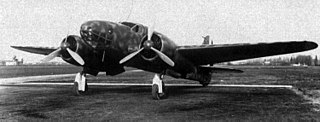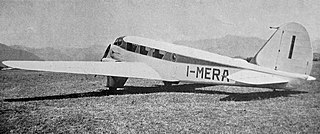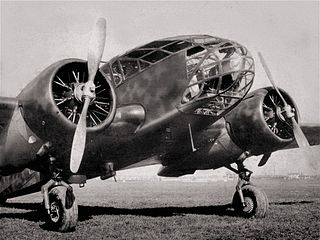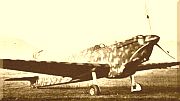
The Caproni Ca.1 was an Italian heavy bomber of the World War I era.

The Caproni Ca.2 was an Italian heavy bomber of the World War I era.

The Caproni Ca.314 was an Italian twin-engine attack/torpedo bomber aircraft, used in World War II.

The Caproni Ca.310 Libeccio was an Italian monoplane, twin-engine reconnaissance aircraft used in World War II. Derived from the similar Ca.309, it had its combat debut during the Spanish Civil War and took part in the earlier phases of World War II in Libya. Some were used in attack groups as a temporary replacement for the unsatisfactory Breda Ba.65. The last Ca.310 was retired by the Italian Air Force in 1948.

The Caproni Ca.135 was an Italian medium bomber designed in Bergamo in Italy by Cesare Pallavicino. It flew for the first time in 1935, and entered service with the Peruvian Air Force in 1937, and with the Regia Aeronautica in January 1938.

The Caproni Ca.100 was the standard trainer aircraft of the Regia Aeronautica in the 1930s. Large numbers of this tandem, two-seat, biplane were built, powered by different engines.

The Caproni Ca.111 was a long-range reconnaissance aircraft and light bomber produced in Italy during the 1930s. It was a derivative of the Ca.101.

The Caproni Ca.101 was a three-engine Italian airliner which later saw military use as a transport and bomber. It was designed in 1927 and first flown in 1928.

The Caproni Ca.313 was an Italian twin-engine reconnaissance bomber of the late-1930s. It was a development of the Ca.310. Its variants were exported to several other countries.

The Caproni Ca.97 was a civil utility aircraft produced in Italy in the late 1920s and early 1930s. As originally designed, it was a high-wing braced trimotor monoplane of conventional configuration with one engine mounted on the nose and the other two carried on strut-mounted nacelles at the fuselage sides. Examples were also produced with only the nose engine or only the two nacelle-mounted engines.

The Caproni Ca.114 was a fighter biplane produced in Italy in the early 1930s which was flown operationally in Peru in the 1930s and 1940s.

The Caproni Ca.132 was a prototype for a large aircraft built in Italy in 1934, intended for use as either a bomber or airliner. It was a conventional low-wing cantilever monoplane, powered by a radial engine on each wing and in the nose. The main undercarriage was housed within large streamlined spats. Configured as an airliner, it would have seated 20 passengers.

The Caproni Ca.308 Borea was a small airliner built in Italy in the mid-1930s.

The Caproni Ca.311 was a light bomber-reconnaissance aircraft produced in Italy prior to and during World War II.

The Caproni Ca.335 Maestrale (Mistral) was an Italian single-engined two-seat fighter-bomber/reconnaissance aircraft of the 1930s.

The Caproni Ca.90 was a prototype Italian heavy bomber designed and built by Caproni. When it first flew in 1929 it was the largest land-based aircraft in the world.
The Caproni Ca.131 was a prototype for a large aircraft built in Italy in 1934, intended for use as either a bomber or airliner. It was a conventional low-wing cantilever monoplane, powered by a radial engine on each wing and in the nose. The main undercarriage was housed within large streamlined spats. Configured as an airliner, it would have seated 17 passengers.

The Caproni Ca.87 was an Italian flying boat built in the 1920s for a planned transatlantic flight.
The Caproni Ca.91 was a proposed Italian flying boat designed by Caproni.
The Caproni Ca.66 and Caproni Ca.67 were Italian night bomber aircraft designed to re-equip the post-World War I Regia Aeronautica.

















